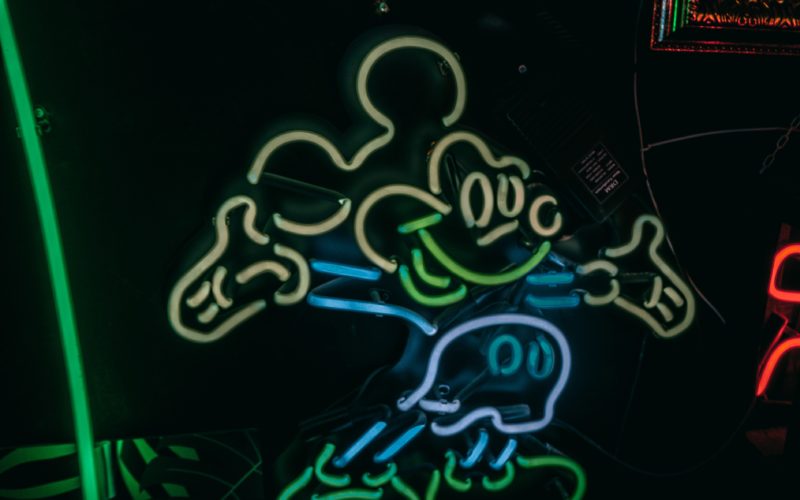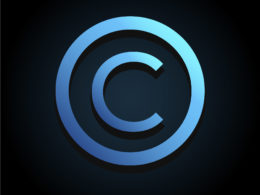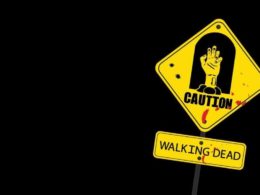Background: Summit Kaiju LLC v. Legendary Pictures, LLC
For the better part of a century, the independent protection of fictional literary characters in film and television has remained an unsettled area of copyright law. This uncertainty can largely be attributed to the fact that §§ 102 and 103 of the Copyright Act, which define copyrightable subject matter, omit any mention of independent literary characters.1[1]Copyright Act of 1976, 17 U.S.C. §§ 102-103 (2018). This is largely because fictional characters are typically cast into the category of ideas and concepts, which is not afforded protection under copyright law.2[2]Id. § 102(b). Fictional literary characters tend to be protectable only when they are components of larger works that are protected under §§ 102 and 103. The lack of independent protection of original literary characters under the Copyright Act has historically been a substantial detriment to plaintiffs seeking recourse and continues to vex creators of the modern era.
A recent dispute concerning the copyrightability of characters arose when Summit Kaiju, a small design company specializing in Godzilla fanfare3[3]Complaint at 3, Summit Kaiju LLC v. Legend Pictures, LLC, No. 21-cv-9779 (C.D. Cal. Dec. 17, 2021) , filed a complaint on December 17, 2021, against Legendary Pictures, the powerhouse production company behind mega-hits like Jurassic World and Dune.4[4]Legendary Pictures Film, https://www.legendary.com/film/ (last visited Jan. 15, 2022). In the complaint, Summit Kaiju alleged that it has owned the copyright to a “living mountain kaiju” design, known as the “Batholith,” since 2017.5[5]Compl., No. 21-cv-9779 at 4. Summit Kaiju alleged that Legendary Pictures unlawfully used the “wholly original”6[6]Id. design in the 2019 film Godzilla: King of the Monsters, under the name “Methuselah.”7[7]Id.
Summit Kaiju’s complaint relates to the issue surrounding independent copyright protection for fictional characters in the modern era. Specifically, it presents an opportunity to discuss the
limitations that often preclude plaintiffs from recovering in character infringement cases. The complaint was filed in the Central District of California, permitting an exploration into the standards used by the Ninth Circuit to assess character infringement cases. This Circuit’s approach can also be contrasted with the standards used in the Second Circuit, although neither approach may ultimately offer a satisfactory outcome for plaintiffs like Summit Kaiju.
The Ninth Circuit Approach Sets a High Bar
In 2020, the Ninth Circuit overhauled its copyright infringement test in Skidmore v. Led Zeppelin.8[8]Skidmore v. Led Zeppelin, 952 F.3d 1051 (9th Cir. 2020). In that case, the estate of Spirit guitarist Randy California claimed that an unpublished composition of Spirit’s “Taurus” was infringed by Led Zeppelin in the opening notes of their iconic song “Stairway to Heaven.”9[9]See Id. Prior to Skidmore, the Ninth Circuit controversially used an “Inverse Ratio” rule.10[10]Daniel A. Schnapp, Good Times, Bad Times: The Ninth Circuit Does Away with “Inverse Ratio Rule” in Led Zeppelin Copyright Case and Questions Need to Prove “Access,” NOW + NEXT (Mar. 10, 2020), https://www.nixonpeabody.com/-/media/Files/Alerts/2020-March/inverse-ratio-ruling-in-Zeppelin-copyright-case-Mar2020.ashx?la=en This rule stated that if a plaintiff could prove that a defendant had a “high degree of access” to the infringed work, then the standard of proof for substantial similarity would be lowered.11[11]Mike Chernoff, Inverting the Inverse Ratio Rule: Leveling the Playing Field for Copyright Infringement Defendants, UNIV. CIN. L. REV: BLOG (Apr. 14, 2020), https://uclawreview.org/2020/04/14/inverting-the-inverse-ratio-rule-leveling-the-playing-field-for-copyright-infringement-defendants/. Substantial similarity “refers to a strong resemblance between a copyrighted work and an alleged infringement”12[12]Substantial Similarity, U.S. LEGAL, https://definitions.uslegal.com/s/substantial-similarity/ (last visited Jan. 15, 2022). and typically is used as a yardstick to determine whether a defendant infringed plaintiff’s work. In Skidmore, the Ninth Circuit held that using the Inverse Ratio rule was inappropriate, as “the concept of ‘access’ is increasingly diluted in our digitally interconnected world.”13[13]Daniel A. Schnapp, Good Times, Bad Times: The Ninth Circuit Does Away with “Inverse Ratio Rule” in Led Zeppelin Copyright Case and Questions Need to Prove “Access,” NOW + NEXT (Mar. 10, 2020), https://www.nixonpeabody.com/-/media/Files/Alerts/2020-March/inverse-ratio-ruling-in-Zeppelin-copyright-case-Mar2020.ashx?la=en Thus, Led Zeppelin prevailed and the Ninth Circuit abandoned the Inverse Ratio rule, leaving copyright owners and practitioners uncertain about how to conduct copyright infringement analysis. In 2015, the court quickly filled this gap in Daniels v. Walt Disney Co, where the plaintiff alleged that her “Moodster” characters had been unlawfully copied in 2014’s Inside Out,14[14]See Daniels v. Walt Disney Co., 958 F.3d 767 (9th Cir. 2020). by relying on the following common law tests: the Warner Brothers test and the Towle test.15[15]See Id.
The Warner Brothers Test
The Warner Brothers test originated in Warner Bros. Pictures v. Columbia Broadcasting System, Inc.16[16]Warner Bros. Pictures v. Columbia Broadcasting Systems, Inc., 216 F.2d 945 (9th Cir. 1954). In that case, the plaintiff sought to bar famed crime writer Dashiell Hammett from utilizing the characters and names from his novel, The Maltese Falcon, in future works following the formation of an agreement that granted the plaintiff exclusive rights to the characters.17[17]See Id. The test that emerged from this case assesses whether a fictional character presented within a copyrighted work is protectable under copyright laws. In Warner Bros., the Ninth Circuit found in favor of the defendant, and held that a fictional character is protectable when it is more than just a “chessman in the game of telling the story.”18[18]Id. This narrowing of the category of protectable characters established a key obstacle to plaintiffs, like Summit Kaiju, seeking protection for lesser-known characters, like Batholith: if the character does not “closely reflect the work itself,” it is unlikely that plaintiffs will be able to recover on a copyright claim.19[19]Samuel J. Coe, The Story of a Character: Establishing the Limits of Independent Copyright Protection for Literary Characters, 86 CHICAGO-KENT L. REV. 1305 (2011).
The Towle Test
The Towle test was established in DC Comics v. Towle and was meant to further define the scope of protection for “comic book, television program, [and] motion picture” characters.20[20]DC Comics v. Towle, 802 F.3d 1012 (9th Cir. 2015). In that case, the plaintiff alleged that the defendant had infringed its copyright when the defendant created three-dimensional replicas of the Batmobile.21[21]See Id. The plaintiff alleged that the Batmobile, represented “graphically in comic books, and as three-dimensional car in television series and motion pictures…was entitled to copyright protection”22[22]Id. as an iconic character. The test that emerged from Towle has three elements:
(1) the character must generally have physical and conceptual qualities,
(2) the character must be sufficiently delineated and display consistent and identifiable character traits, and
(3) the character must be especially distinctive, containing some unique elements of expression.23[23]Id.
In Towle, the court determined that the Batmobile, as a distinct character in its own right, met the elements of the Towle test, and the plaintiff prevailed.24[24]See Id. Nonetheless, these elements further narrow the category of characters protectable under the Warner Brothers test. Unless plaintiffs can prove that their character falls into one of two categories, iconic or wholly novel, it is unlikely that the court will extend the character copyright protection under the Towle test.
Application in the Ninth Circuit
Applying these narrow tests in Daniels, the court loosely defined the scope of protection afforded to characters under copyright law. Characters that sufficiently dominate the story so that it essentially becomes a character study and characters that meet all three elements of the Towle test are protectable.25[25]See Daniels v. Walt Disney Co., 958 F.3d 767 (9th Cir. 2020). The bar set by each categorization is undoubtedly high, especially for plaintiffs seeking protection for lesser-known original characters and for those seeking protection for characters that may not be deemed undeniably unique by modern standards. Even the Ninth Circuit acknowledged that few characters actually meet the high bar set by the Warner Brothers and Towle tests to receive copyright protection.26[26]See Id. at 774. Thus, it is rare for the Ninth Circuit to return a verdict in favor of the plaintiff in a character infringement case. Therefore, if the court applies these tests to Summit Kaiju LLC, chances of recovery are unfortunately slim.
The Second Circuit Approach Offers an Alternative but Unclear Path
Aside from the Ninth Circuit, the Second Circuit is a hotbed for copyright disputes, due to the fact that “the industries that generate the most copyright disputes are located in New York and California.”27[27]Andrew L. Deutsch, Substantial Similarity in Copyright: It Matters Where You Sue, DLA PIPER (Dec. 22, 2020), https://www.dlapiper.com/en/germany/insights/publications/2020/12/ipt-news-q4-2020/substantial-similarity-in-copyright/. The Second Circuit has historically rejected the Ninth Circuit’s former Inverse Ratio rule, once calling it a “fabricated principle of law.”28[28]Mike Chernoff, “Inverting the Inverse Ratio Rule: Leveling the Playing Field for Copyright Infringement Defendants,” UNIV. CIN. L. REV: BLOG (Apr. 14, 2020), https://uclawreview.org/2020/04/14/inverting-the-inverse-ratio-rule-leveling-the-playing-field-for-copyright-infringement-defendants/. Instead, the Second Circuit follows the “Distinct-Delineation” test, which was loosely established in Nichols v. Universal Pictures, Corporation.29[29]Nichols v. Universal Pictures Corp., 45 F.2d 119 (2d Cir. 1930).
The Distinct-Delineation Test
In Nichols, the Second Circuit held that generic characters had the least amount of legitimacy within the realm of copyright protection.30[30]See Id. This established the idea that “sufficient development of any literary character” resulted in a higher likelihood of independent copyright protection.31[31]Samuel J. Coe, The Story of a Character: Establishing the Limits of Independent Copyright Protection for Literary Characters, 86 CHICAGO-KENT L. REV. 1305 (2011). Over time, the two-part test stemming from the Nichols opinion became the court’s preferred character infringement test. To receive copyright protection under the Distinct-Delineation test, the character must be “originally conceived and sufficiently delineated.”32[32]Id. Once this is determined, the court then assesses whether the allegedly infringing work contains a “substantial copying of the original character or ‘merely a broader and more abstract outline.’”33[33]Id.
Application in the Second Circuit
In the years following the Nichols decision, the Second Circuit had trouble assessing character infringement cases. This difficulty was largely due to the fact that “the threshold of ‘distinct delineation’ that would be required to provide copyright to fictional characters remained undefined.”34[34]Kathryn M. Foley, Protecting Fictional Characters: Defining the Elusive Trademark-Copyright Divide Note, 41 CONN. L. REV. 921 (2009). Ten years after Nichols, the court attempted to clarify this standard in Detective Comics, Inc. v. Bruns Publications.35[35]Detective Comics v. Bruns Publications, 111 F.2d 432 (2d Cir. 1940). In that case, the plaintiff alleged that its original character, Superman, was infringed by the defendants via their “Wonderman” character.36[36]See Id. The court seemed to follow an iteration of the two-part test stemming from Nichols by balancing the infringing work against the original work to determine whether the defendant infringed the plaintiff’s character.37[37]See Id. The court found in favor of the plaintiff, holding that while the superhero archetype may not be copyrightable, the actual expression of “Wonderman” was similar enough to that of Superman to constitute copyright infringement.38[38]See Id. Despite the fact that the court arrived at a clear conclusion, the decision highlighted the deficiencies of the Distinct-Delineation test. Specifically, the test relies heavily on the discretion of judges to determine “which fictional characters deserve protection, and which lack sufficient development.”39[39]Jasmina Zecevic, Distinctly Delineated Fictional Characters That Constitute the Story Being Told: Who Are They and Do They Deserve Independent Copyright Protection?, 8 VANDERBILT. L. REV. 373 (2006). This reliance on judicial discretion raises concerns regarding the efficacy of the Distinct-Delineation test as the Second Circuit’s primary character infringement standard. Clarity may be gleaned by turning to the second prong of the Ninth Circuit’s Towle test, which clarifies the ambiguity of sufficient or distinct delineation by requiring that such delineation render the character “recognizable as the same character whenever it appears.”40[40]DC Comics v. Towle, 802 F.3d 1012 (9th Cir. 2015). The bottom line is that without a clear answer as to what “distinct delineation” means, judges are left to their own devices to arbitrarily assess character infringement cases without concrete guidance.
Conclusion
The lack of a bright-line statutory rule regarding the copyrightability of fictional literary characters left courts to construct inconsistent, indeterminate, and variable tests to address the lingering uncertainty. While it appears that specificity is the primary requirement for both the Ninth and Second Circuits to afford protection to fictional characters, this may change because of the lack of uniformity among courts.
While the criteria for granting copyright protection to characters are narrow, the high burden of meeting these standards functions as a crucial protective measure, preventing frivolous suits over generic and iconic characters. Despite this protective function, the question remains whether deterring frivolous suits outweighs the near impossibility of obtaining recovery in these cases. Are the standards in place standards of equity or are they tipped in favor of infringers? While the plaintiff in Summit Kaiju LLC claims protection under the Copyright Act,41[41]Compl. at 4, Summit Kaiju LLC v. Legend Pictures, LLC, No. 21-cv-9779 (C.D. Cal. Dec. 17, 2021). it must still prove that its character meets the high bar employed by the Ninth Circuit to receive copyright protection and recover. The fact that this area of copyright law is governed primarily by common law makes character infringement cases like Summit Kaiju LLC difficult to decipher. Moving forward, it may be necessary for Congress or the United States Supreme Court to clarify the copyrightability of fictional characters under the Copyright Act to create a uniform criterion used among the circuit courts.
Written by: Haley Zenenberg
Haley is a 2024 J.D. Candidate at Brooklyn Law School
1 Copyright Act of 1976, 17 U.S.C. §§ 102-103 (2018).
2 Id. § 102(b).
3 Complaint at 3, Summit Kaiju LLC v. Legend Pictures, LLC, No. 21-cv-9779 (C.D. Cal. Dec. 17, 2021)
4 Legendary Pictures Film, https://www.legendary.com/film/ (last visited Jan. 15, 2022).
5 Compl., No. 21-cv-9779 at 4.
6 Id.
7 Id.
8 Skidmore v. Led Zeppelin, 952 F.3d 1051 (9th Cir. 2020).
9 See Id.
10 Daniel A. Schnapp, Good Times, Bad Times: The Ninth Circuit Does Away with “Inverse Ratio Rule” in Led Zeppelin Copyright Case and Questions Need to Prove “Access,” Now + Next (Mar. 10, 2020), https://www.nixonpeabody.com/-/media/Files/Alerts/2020-March/inverse-ratio-ruling-in-Zeppelin-copyright-case-Mar2020.ashx?la=en
11 Mike Chernoff, Inverting the Inverse Ratio Rule: Leveling the Playing Field for Copyright Infringement Defendants, Univ. Cin. L. Rev: Blog (Apr. 14, 2020), https://uclawreview.org/2020/04/14/inverting-the-inverse-ratio-rule-leveling-the-playing-field-for-copyright-infringement-defendants/.
12 Substantial Similarity, U.S. Legal, https://definitions.uslegal.com/s/substantial-similarity/ (last visited Jan. 15, 2022).
13 Daniel A. Schnapp, Good Times, Bad Times: The Ninth Circuit Does Away with “Inverse Ratio Rule” in Led Zeppelin Copyright Case and Questions Need to Prove “Access,” Now + Next (Mar. 10, 2020), https://www.nixonpeabody.com/-/media/Files/Alerts/2020-March/inverse-ratio-ruling-in-Zeppelin-copyright-case-Mar2020.ashx?la=en
14 See Daniels v. Walt Disney Co., 958 F.3d 767 (9th Cir. 2020).
15 See Id.
16 Warner Bros. Pictures v. Columbia Broadcasting Systems, Inc., 216 F.2d 945 (9th Cir. 1954).
17 See Id.
18 Id.
19 Samuel J. Coe, The Story of a Character: Establishing the Limits of Independent Copyright Protection for Literary Characters, 86 Chicago-Kent L. Rev. 1305 (2011).
20 DC Comics v. Towle, 802 F.3d 1012 (9th Cir. 2015).
21 Id.
22 Id. § 50-f(7).
23 Id.
24 See Id.
25 See Daniels v. Walt Disney Co., 958 F.3d 767 (9th Cir. 2020).
26 See Id. at 774.
27 Andrew L. Deutsch, Substantial Similarity in Copyright: It Matters Where You Sue, DLA Piper (Dec. 22, 2020), https://www.dlapiper.com/en/germany/insights/publications/2020/12/ipt-news-q4-2020/substantial-similarity-in-copyright/.
28 Mike Chernoff, “Inverting the Inverse Ratio Rule: Leveling the Playing Field for Copyright Infringement Defendants,” Univ. Cin. L. Rev: Blog (Apr. 14, 2020), https://uclawreview.org/2020/04/14/inverting-the-inverse-ratio-rule-leveling-the-playing-field-for-copyright-infringement-defendants/.
29 Nichols v. Universal Pictures Corp., 45 F.2d 119 (2d Cir. 1930).
30 See Id.
31 Samuel J. Coe, The Story of a Character: Establishing the Limits of Independent Copyright Protection for Literary Characters, 86 Chicago-Kent L. Rev. 1305 (2011).
32 Id.
33 Id.
34 Kathryn M. Foley, Protecting Fictional Characters: Defining the Elusive Trademark-Copyright Divide Note, 41 Conn. L. Rev. 921 (2009).
35 Detective Comics v. Bruns Publications, 111 F.2d 432 (2d Cir. 1940).
36 See Id.
37 See Id.
38 See Id.
39 Jasmina Zecevic, Distinctly Delineated Fictional Characters That Constitute the Story Being Told: Who Are They and Do They Deserve Independent Copyright Protection?,8 Vanderbilt. L. Rev. 373 (2006).
40 DC Comics v. Towle, 802 F.3d 1012 (9th Cir. 2015).
41 Compl. at 4, Summit Kaiju LLC v. Legend Pictures, LLC, No. 21-cv-9779 (C.D. Cal. Dec. 17, 2021).




